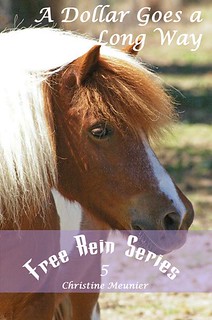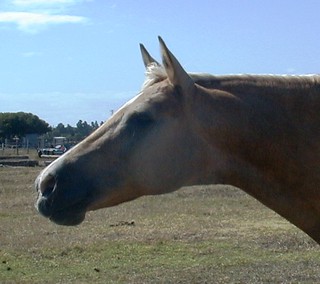by Kate Lattey
Firstly - an apology. I'm not only late with this post, but I completely skipped out on last month's post. I could offer a range of excuses - I got a new phone and this one isn't connected to my Gmail account, so I missed the email reminder; I was at a horse show all weekend anyway and it's a bit tricky to write a blog post on a depleted cell phone; I've been so insanely busy this last month I can't even begin to start complaining about it... but really, those are just excuses.
So here I am, sitting on my bed at half past ten in the evening, having got up at quarter past four this morning and spending most of the day outside, standing on the top of a hill talking into a microphone (commentating a cross-country event, one of my favourite horse show volunteer jobs)...and although I'm tired, I'm writing this blog. Because I said I would, and you, dear readers, are expecting me to.
Expectation. It seems like an appropriate word for today, a day on which, unless you live in New Zealand, certain parts of Australia, or England, you probably didn't know was auspicious. But it has been, because today was the day of the Rugby World Cup Final 2015, and the New Zealand All Blacks were playing the Australian Wallabies at Twickenham stadium. Hence the four a.m. wake up (New Zealand time).
Part of living in New Zealand is the willingness to eat, sleep and breathe rugby, to support our team to the death, to bleed Black. #allblackeverything is the hashtag of choice from the players right now, and it pretty well sums it up. The All Blacks are a mighty team, having won 77% of their international games since 1903, and when the first Rugby World Cup (RWC) was played in 1987, we hosted, and we won. Four years later, the cup went to Australia. Then to South Africa in 1995, and England in 1999, and then back to Australia, and back to South Africa. Every four years, we fell early. In 2007, we were defeated in the quarter-final - it was a bleak day for New Zealand. We felt it as deeply as the players did, and derogatory words were thrown around.
Losers. Chokers. We didn't seem to be able to make it count when it really mattered, and it chafed. We won the Tri-Nations tournaments, Bledisloe Cup tournaments, had undefeated international tours of the UK, and still we couldn't bring home the Rugby World Cup. It became a thorn in our sides, and the desire to win became more fervent every time the RWC rolled around.
This time... And yet we fell, again and again, when it came to the Rugby World Cup. We could be ranked #1 in the world for year upon year upon year, never ceding that title, but we couldn't call ourselves the World Champions.
Until 2011, when we hosted the RWC in New Zealand. We are not a big country, but our promise of "A stadium of four million" came to fruition as the entire country got behind the tournament. Schools painted their front fences black, All Blacks flags hung outside houses and flew from cars, and you couldn't drive anywhere in the country, even down the most rural back road, without seeing some message of support, whether it was a scarecrow in All Blacks clothing, or a message of support spraypainted on the side of wrapped baylage. The team had the support of a nation, they were playing at home, and they marched into the final with complete determination and belief. We were playing France, once again. On paper, we were by far the better team. On the pitch, it came down to the narrowest of margins - 8 points to 7 - but we did it. We finally earned the right to call ourselves World Champions.
This morning, four years later, the All Blacks kicked off against Australia. Ninety minutes later, we could once again call ourselves World Champions. The first team to win the cup three times. The first team to win
twice in a row. And the weight of expectation that had sat on the team's shoulders for so long, slowly rolled off. They did it. They proved a point, and we are so, so proud.
That's all very nice, I hear you say, but what does it have to do with horses? Nothing, directly - but it does have to do with writing. Because expectation is something that we all have to live up to. The weight of expectation on me to produce another book, and another, is nothing when compared to the expectations placed on All Black captain (and all round legend) Richie McCaw, but it is expectation, nonetheless.
I want to write more. That's why I recently cut back my working week from five days to four, so that I would have more time. But I was simultaneously offered a job sub-editing a leading equestrian magazine, and it didn't seem like a job I could turn down. So I cut my working week back by eight hours...and am now working an extra 18 hours...how did that happen?
Oh well. That's life, and I am still trying to find time to write in amongst both of those jobs, and riding and showing my horse, and organising Pony Club rallies for my local branch, where I am Head Coach. Which reminds me, they're expecting me to write a rally plan before Tuesday...
But I am writing. I've got three-quarters of
Six to Ride, book six in my Pony Jumpers series, written so far. I know what happens next, I just have to find time to write it down. Maybe I need to start getting up earlier in the mornings...but for now, I need to go to bed, because it's 11pm and I've been up since quarter past four... It was worth it though, and I will leave it to Richie McCaw to sum things up in his own charming, not-quite-grammatically-correct way:



























